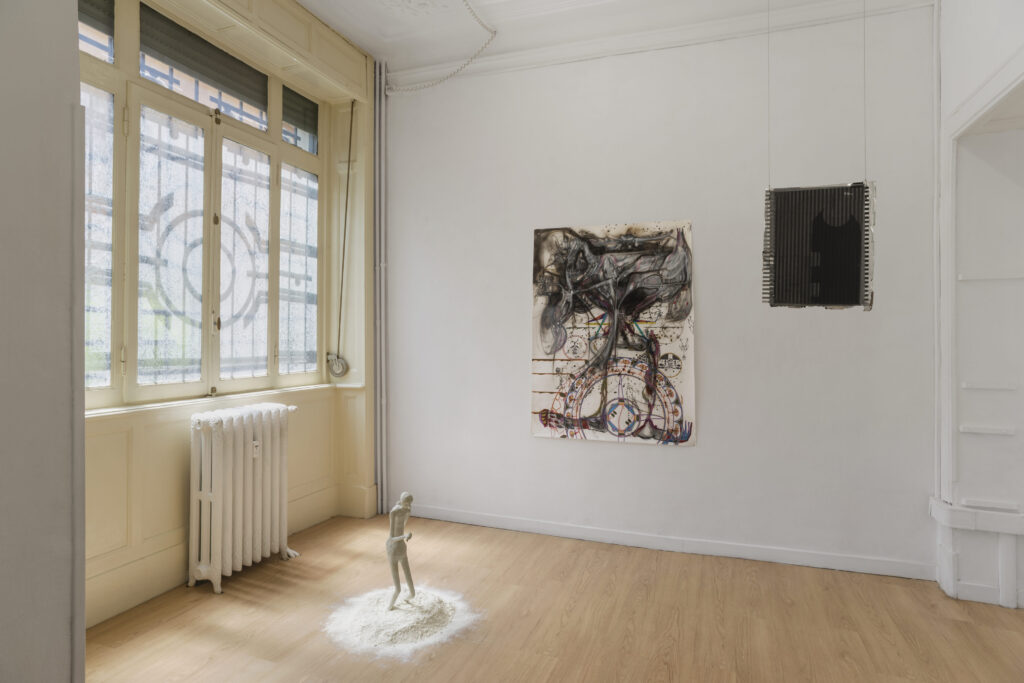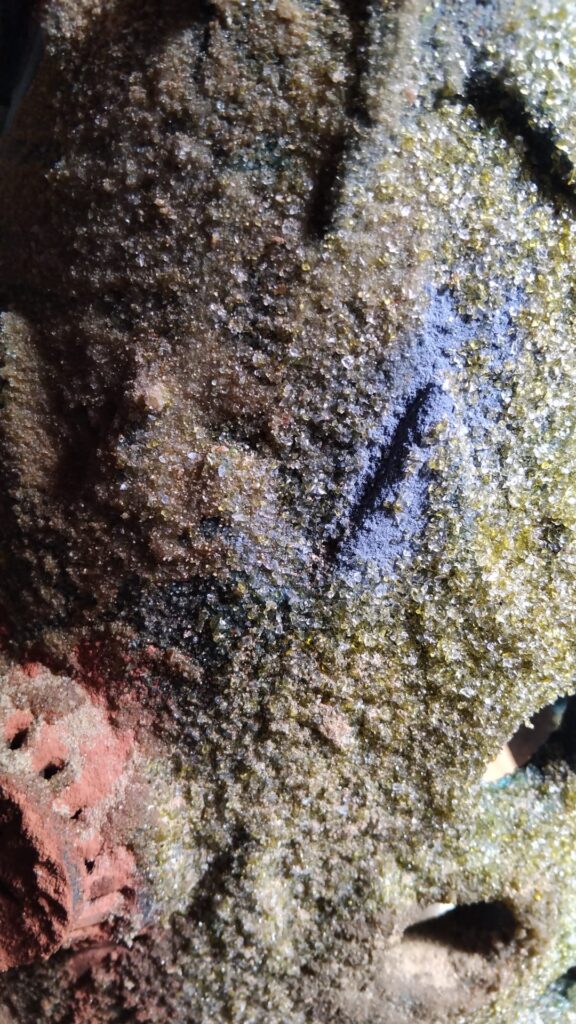This exhibition originally sought to introduce disparately acquainted artists and their contemporaries living in New York City. I tried to avoid falling into the trap of similarity as a curatorial drive, as I feel that it does not ontologically lead to meaning or visceral responses.
During the period of time meeting and discussing work with the artists I discovered that what I was after were structural objects that elicit emotional responses; re-worked with evidence of erasure, dealing with repetition and grids, and figures emerging out of dust.
There are notational gestures in each work that suggest coded messaging that the artists are de- veloping, punctuated by the appearance of archetypal forms; usually faces, figures, writing and architectural elements. It is as though the works are a flurry of notions, which are then reigned in by imagery. So unlike the title might suggest, the quicksand isn’t the tornado of marks from which the figure emerges, but the plot device that allows the rest to settle. This is the typical function of quicksand in movies. It is an obstacle to serve as an emblematic vignette of a larger narrative. It is through moments of figuration or familiarity that the grid can become tiles, and therefore a ground for us to place things upon.
Photo: Marco Davolio
This exhibition originally sought to introduce disparately acquainted artists and their contemporaries living in New York City. I tried to avoid falling into the trap of similarity as a curatorial drive, as I feel that it does not ontologically lead to meaning or visceral responses.
During the period of time meeting and discussing work with the artists I discovered that what I was after were structural objects that elicit emotional responses; re-worked with evidence of erasure, dealing with repetition and grids, and figures emerging out of dust.
There are notational gestures in each work that suggest coded messaging that the artists are de- veloping, punctuated by the appearance of archetypal forms; usually faces, figures, writing and architectural elements. It is as though the works are a flurry of notions, which are then reigned in by imagery. So unlike the title might suggest, the quicksand isn’t the tornado of marks from which the figure emerges, but the plot device that allows the rest to settle. This is the typical function of quicksand in movies. It is an obstacle to serve as an emblematic vignette of a larger narrative. It is through moments of figuration or familiarity that the grid can become tiles, and therefore a ground for us to place things upon.
Photo: Marco Davolio
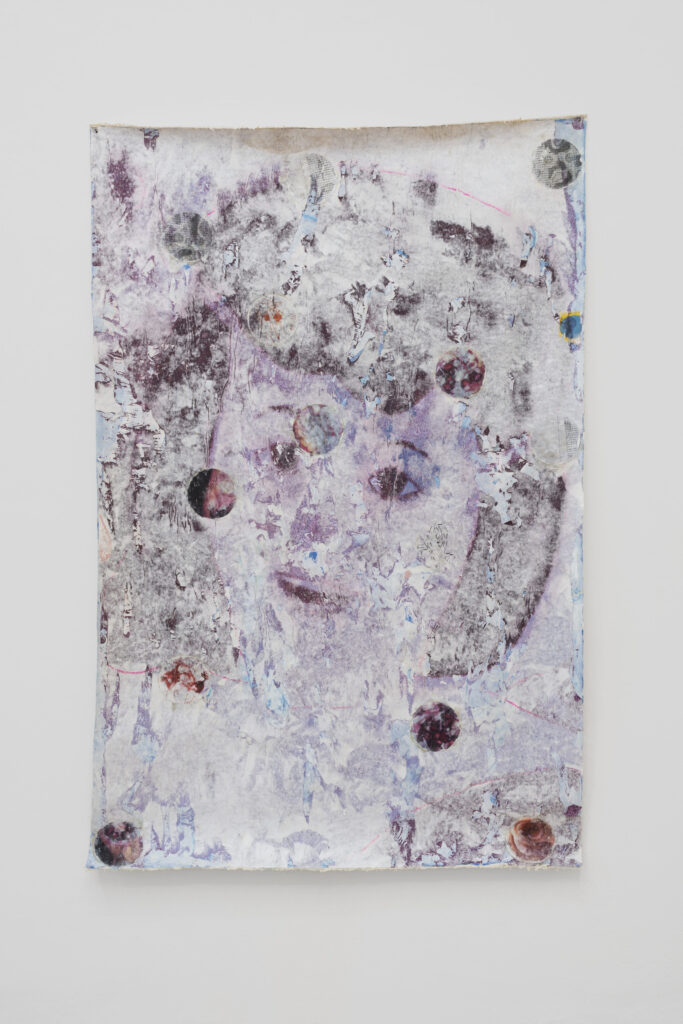 Justin CaguiatUntitled, 2018
Justin CaguiatUntitled, 2018
Mixed media on canvas 139x94cm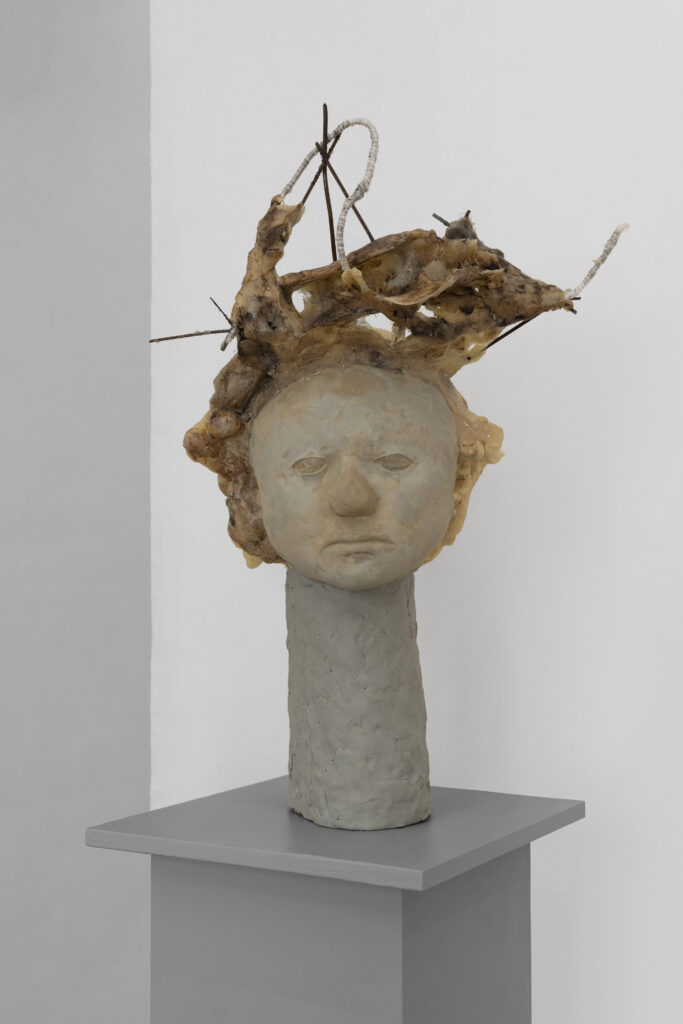 TarwukKLOSKLAS romAKENO2, 2019
TarwukKLOSKLAS romAKENO2, 2019
Polyurethane foam, wire, BQE relics, resin clay, enamel, acrylic, coyote hide, coffee, ink, spit 45x60x40cm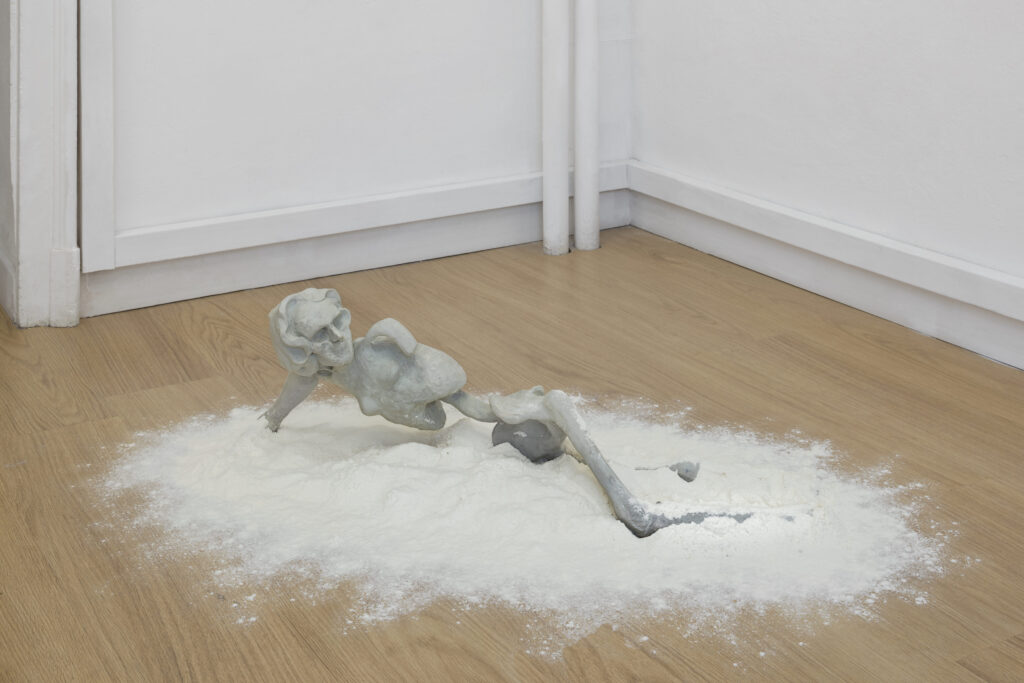 Sam Anderson4 O’Clock, 2016
Sam Anderson4 O’Clock, 2016
Epoxy clay and wire 20x83x30cm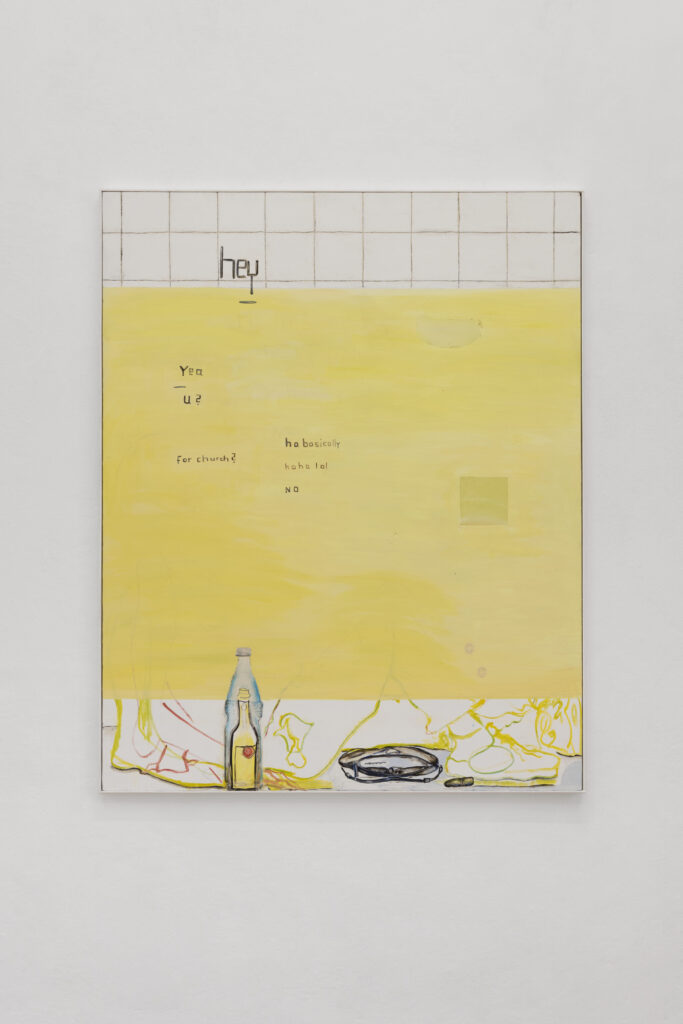 Dani LederChurch, 2019
Dani LederChurch, 2019
Oil and carving on primed high density foam 125x98cm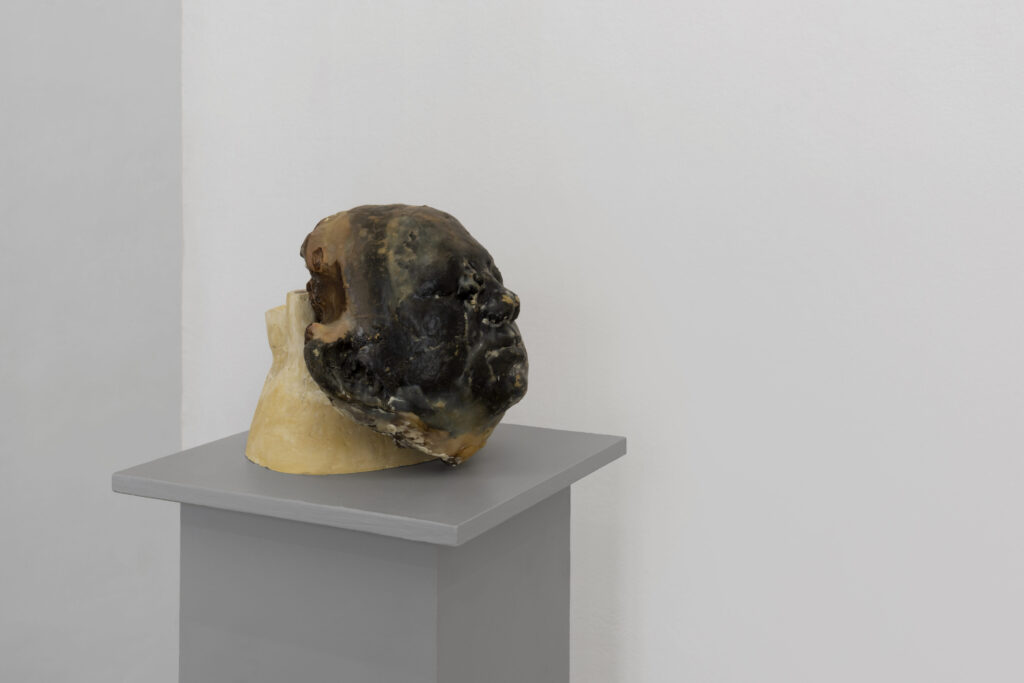 TarwukKLOSKLAS_NODA;hue 319, 2019
TarwukKLOSKLAS_NODA;hue 319, 2019
plaster, resin clay, putty, wood, coyote hide, wire, ink, acrylic
30x22x24cm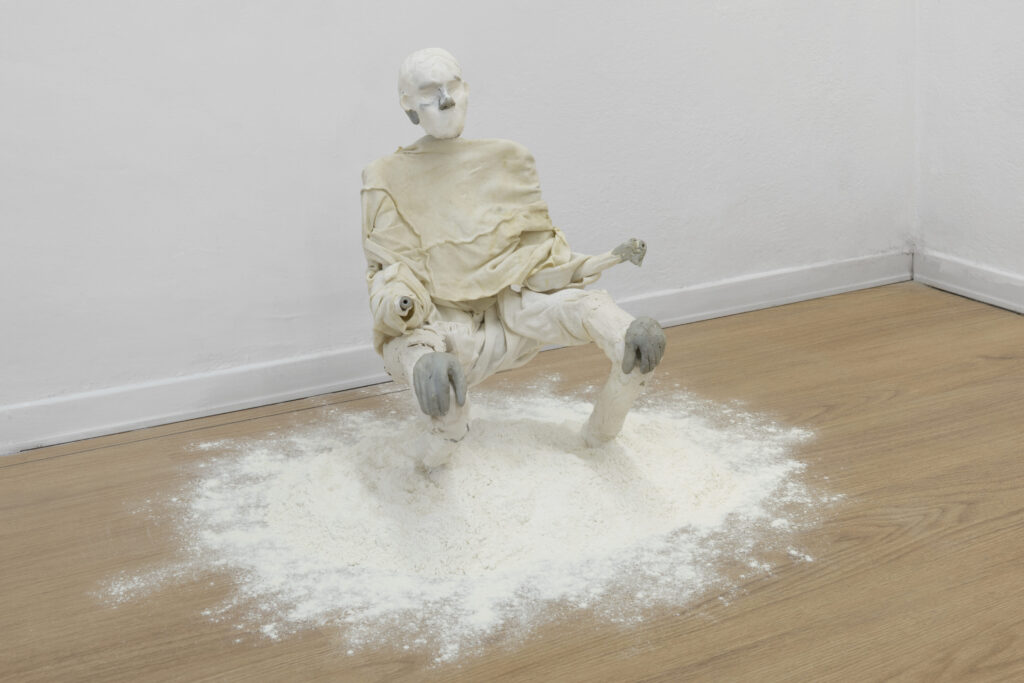 Sam AndersonDad, 2017
Sam AndersonDad, 2017
Clay, foam, wire, papier- mache, cloth
53x30x26cm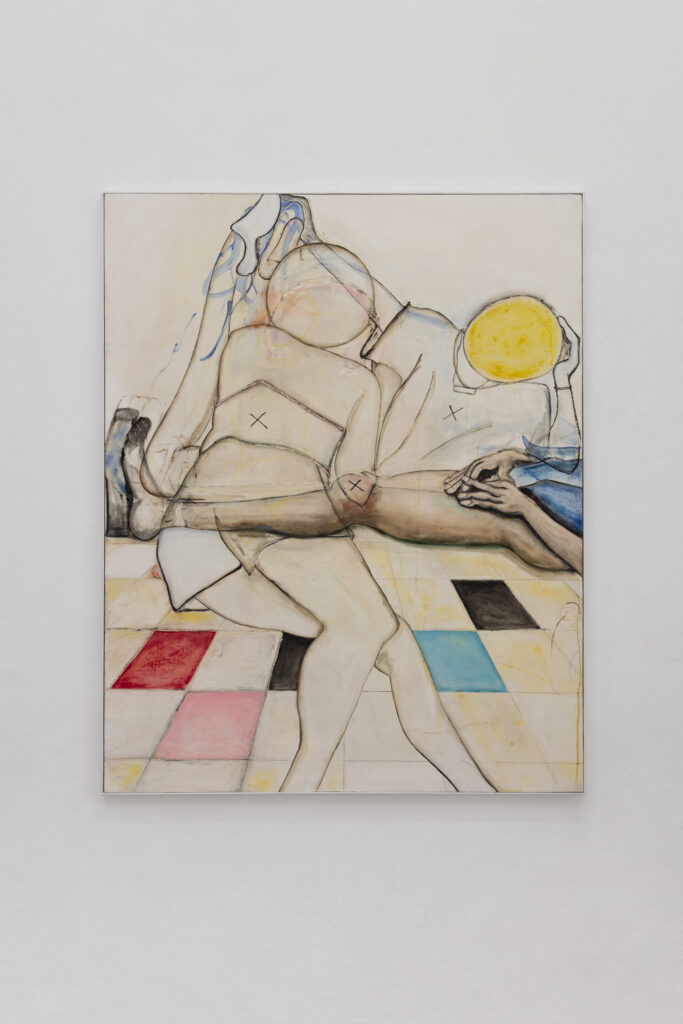 Dani LederDream Where Everyone Lies on Top of Me, 2019
Dani LederDream Where Everyone Lies on Top of Me, 2019
Oil and carving on primed high density foam 125x98cm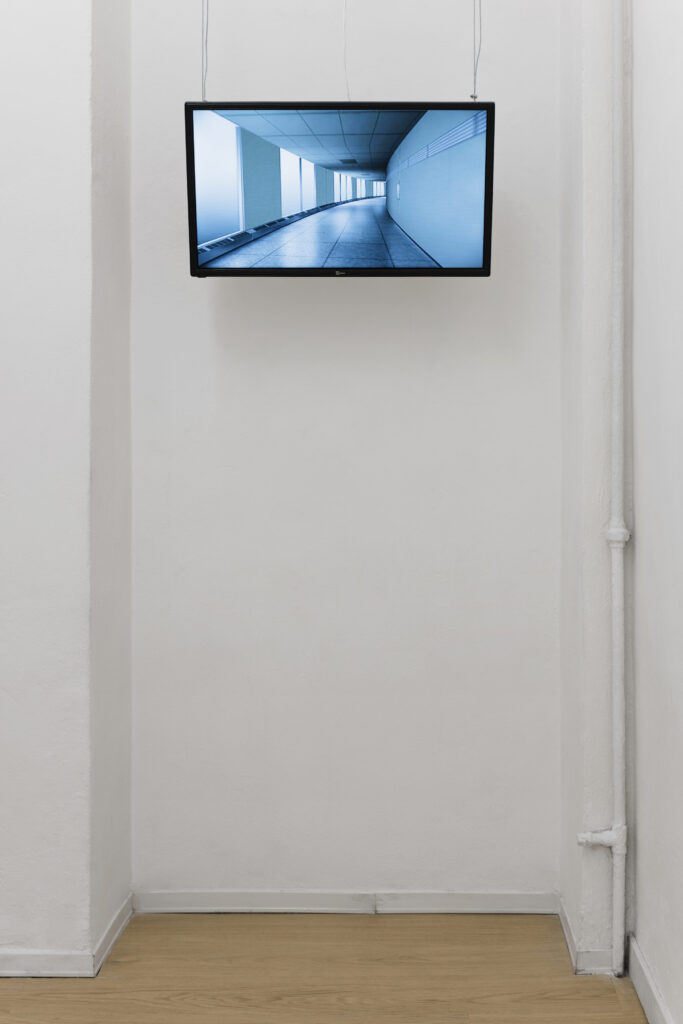 Craig KalpakjianCorridor, 1995
Craig KalpakjianCorridor, 1995
Computer-generated animation on laserdisc2’06’’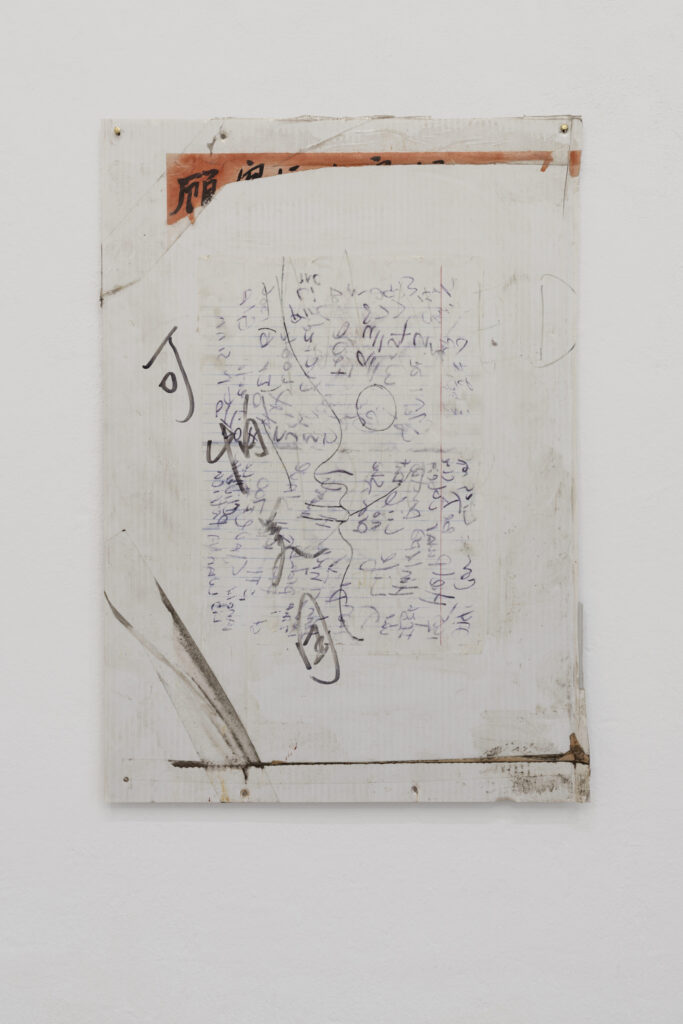 Justin CaguiatUntitled, 2018
Justin CaguiatUntitled, 2018
Mixed media on corrugated plastic
76x61cm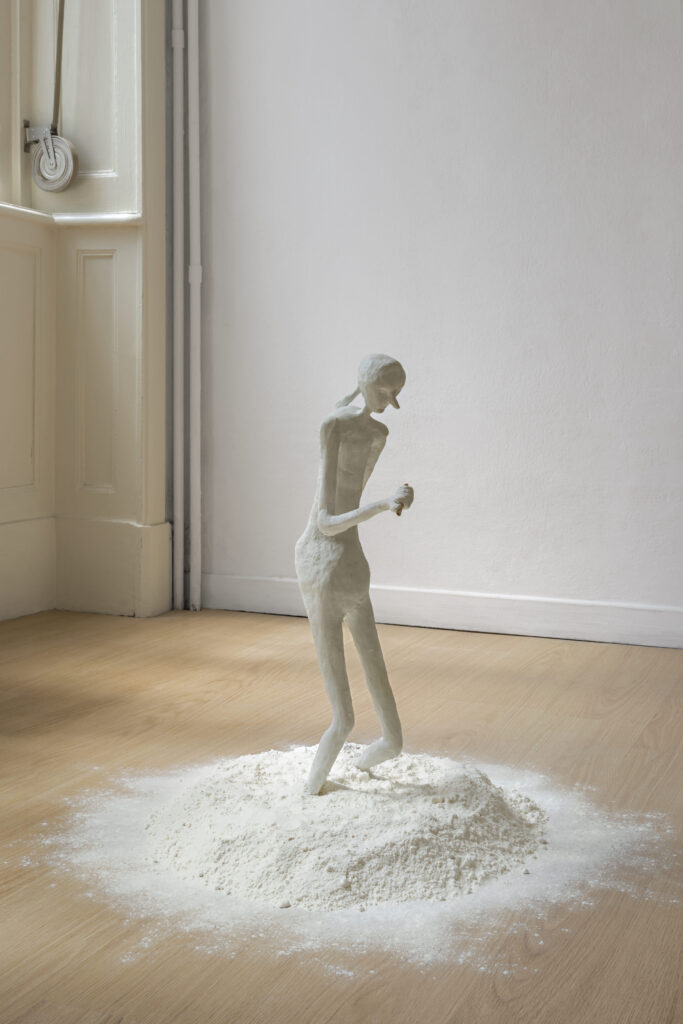 Sam AndersonThe Advocate, 2016
Sam AndersonThe Advocate, 2016
Epoxy clay and wood
66x40x40cm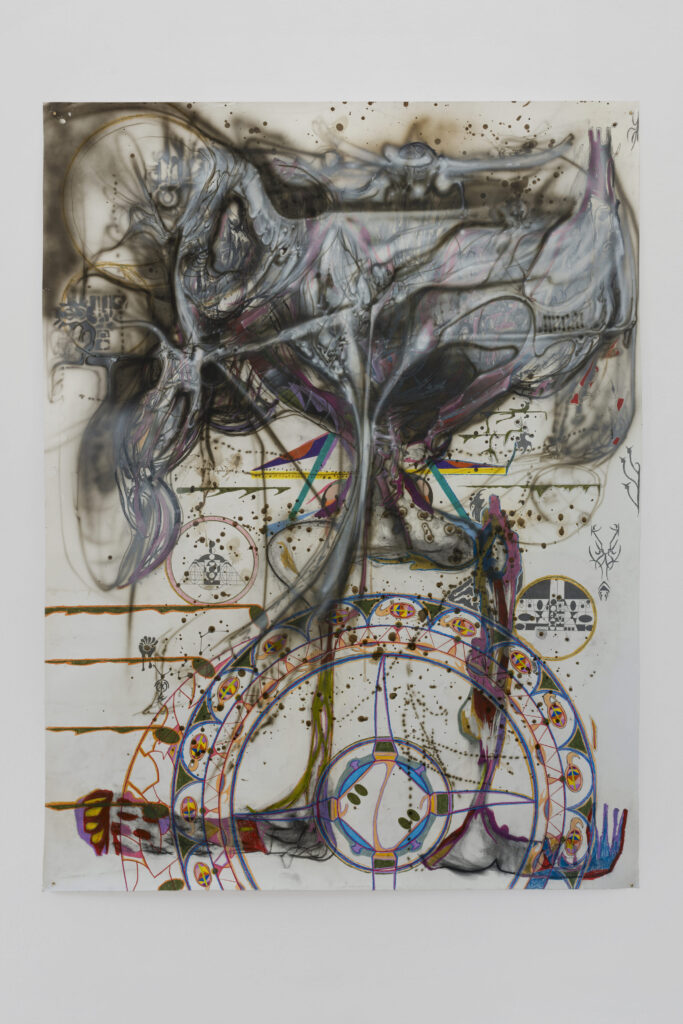 TarwukTROZ_JIN GTnn/56.11, 2016-2019
TarwukTROZ_JIN GTnn/56.11, 2016-2019
Charcoal, graphite, colored pencils, acrylics, collage on paper
152x114,5cm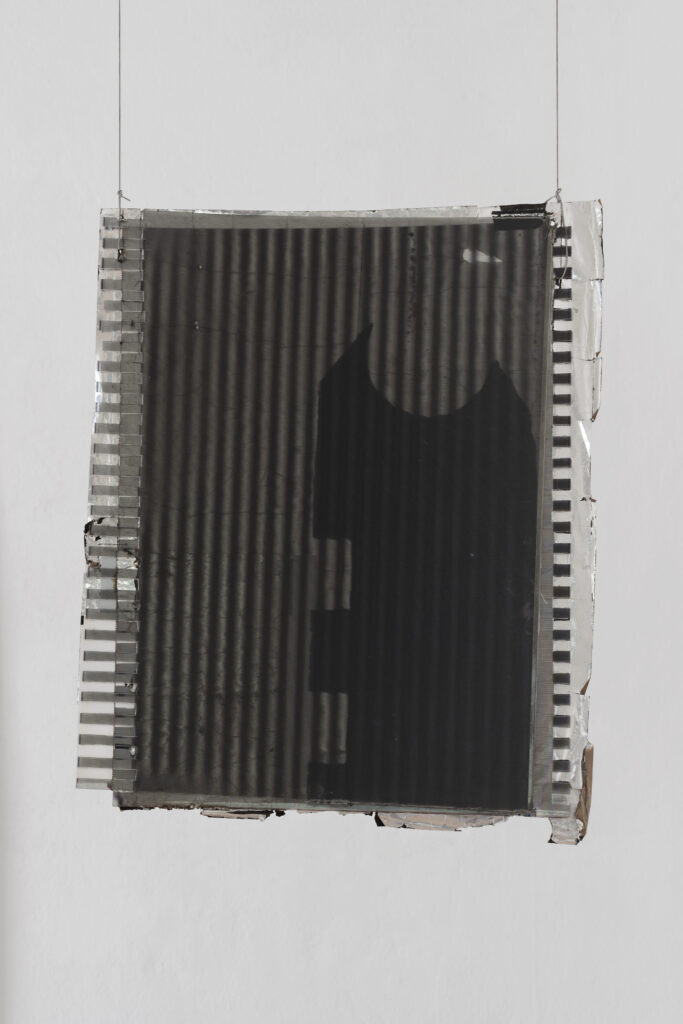 Kate LevantUntitled, 2011
Kate LevantUntitled, 2011
Mixed media collage 57x46cm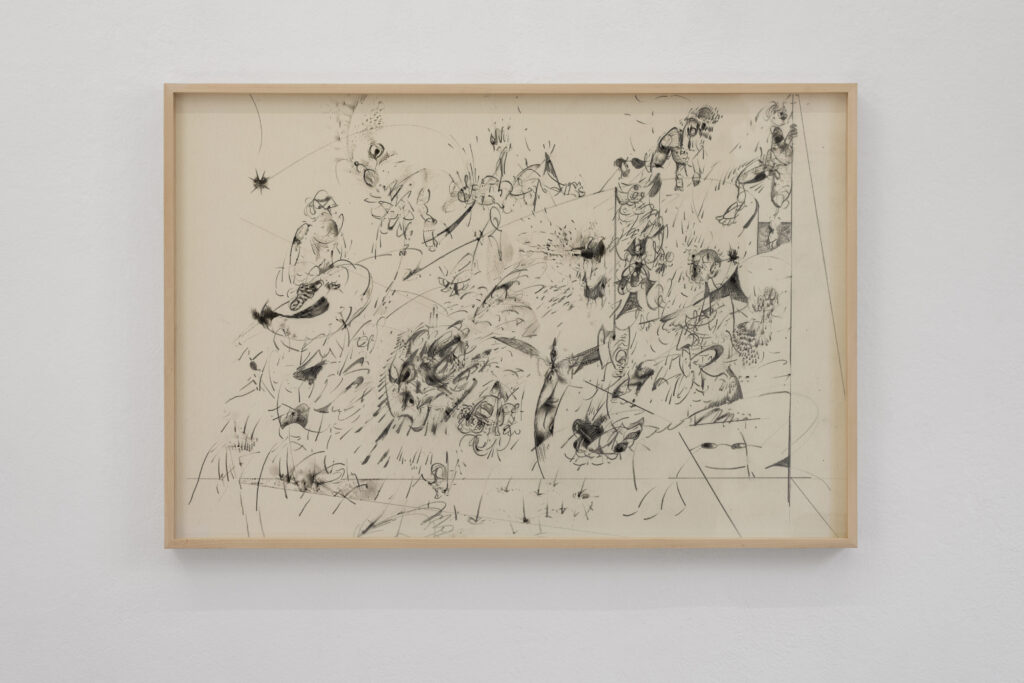 Vijay MasharaniWrought security is a government job, 2019
Vijay MasharaniWrought security is a government job, 2019
Graphite, open source neural network, inkjet print
93,5x62,5x4cm
Sam Anderson (b. 1982, Los Angeles, CA) received an MFA in sculpture from Yale University. Recent solo exhibitions: A Flower Is A Loveso- me Thing, Chapter NY, New York, Big Bird, Kölnischer Kunstverein, Cologne, Germany Sculpture Center, New York in 2017 and 2013. Recent group exhibitions: Endless Love, Tanya Leighton, Berlin; Sam Anderson & Michael Dean, Boca Raton Museum of Art; Objects Like Us, The Aldrich Contemporary Museum of Art, Ridgefield; Nothing Will Be As Before, Tanya Leighton, Berlin, Germany;Salon Vogue, New Bretagne Belle Air, Essen, Germany, A Show Yet to be Titled, 83 Pitt Street Gallery, New York; ICHTS, Dortmunder Kunstverein, Dortmund, Germany, Daydream from 2013, Canada Gallery, New York.

Justin Caguiat (b. 1989, Tokyo) is based in New York, NY. Recent projects include a solo exhibition at 15 Orient; and group exhibitions at The Loon, Kunsthalle Zürich, Shimizu Brand, The Sunroom; and a book of writing published by Codétte.
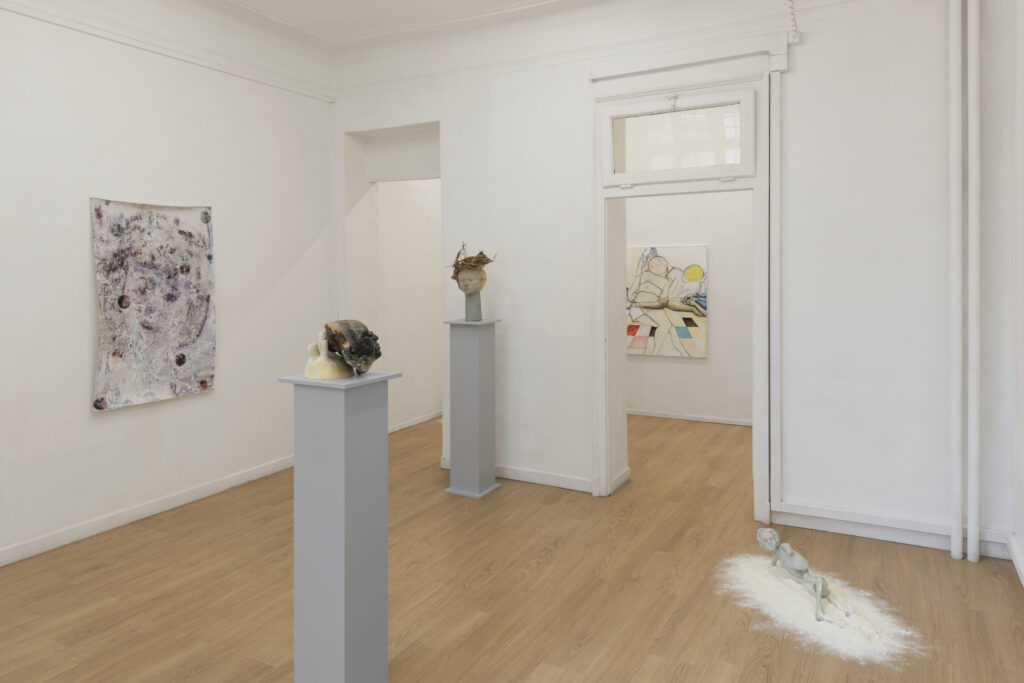
Craig Kalpakjian has exhibited widely throughout the U.S. and Europe. Recent exhibition: “The Sun Placed in The Abyss” at the Columbus Museum of Art, “Artists’ Choice: An Expanded Field of Photography” at Mass MoCA, “The Optical Unconscious” at The Gebert Institute in Switzerland; “Drone-the Automated Image” in Montreal; “After Photoshop: Manipulated Photography in the Digital Age” at the Metropolitan Museum of Art; “Entertainment” at Greene Naftali Gallery in New York; and “The Evryali Score” at David Zwirner Gallery in New York. His work is included in the collections of The Museum of Modern Art, The Whitney Museum of American Art and the Metropolitan Museum of Art In New York, The San Francisco Museum of Modern Art, and the Centre Pompidou in Paris

Dani Leder (1983) Dani Leder is a German artist and lives and works in New York. She is completing her MFA at Bard College this year and studied at Staedel Schule in Frankfurt before. She also holds a PhD in philosophy, with a focus on linguistics and psychoanalysis, which has a strong influence on her paintings. She has shown, among other places, at Neue Alte Bruecke (Frankfurt), Off Vendome (NYC), Page NYC, On Stellar Rays.
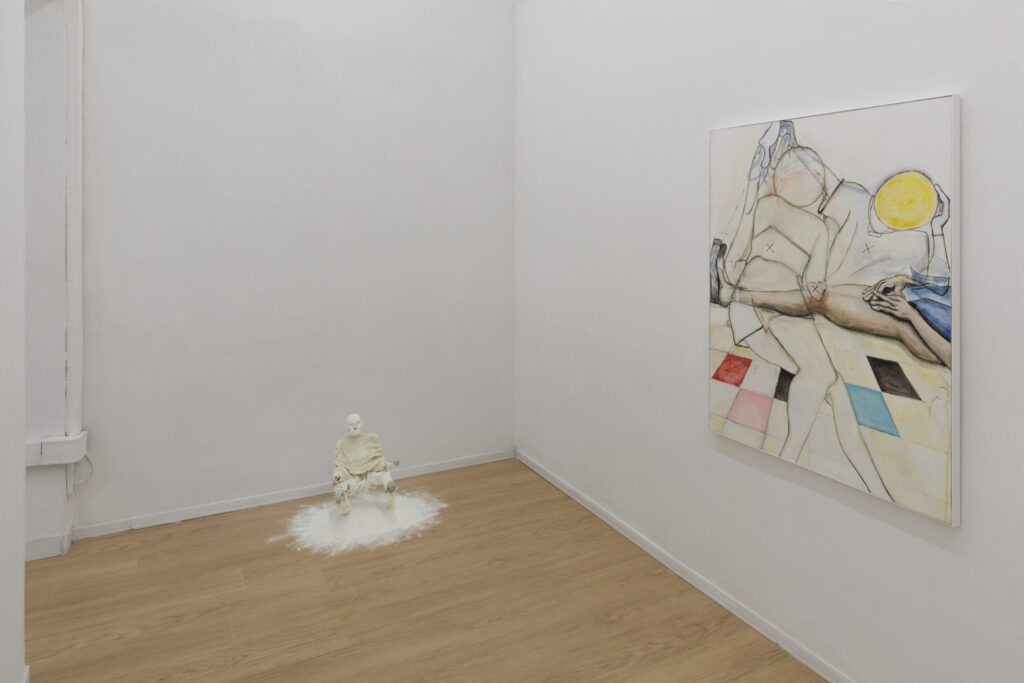
Kate Levant (b. 1983 , Chicago, IL) is an American Sculptor. She has degrees from Yale University[1] and the School of the Museum of Fine Arts, Boston.[2] Her work has been included in the 2012 Whitney Biennial at Whitney Museum of American Art.[3] She is represented by Monique Meloche in Chicago. Previously, she was represented by Zach Feuer Gallery in New York. She uses salvaged industrial materials, papers, aluminum foil and household items to create abstract assemblages.
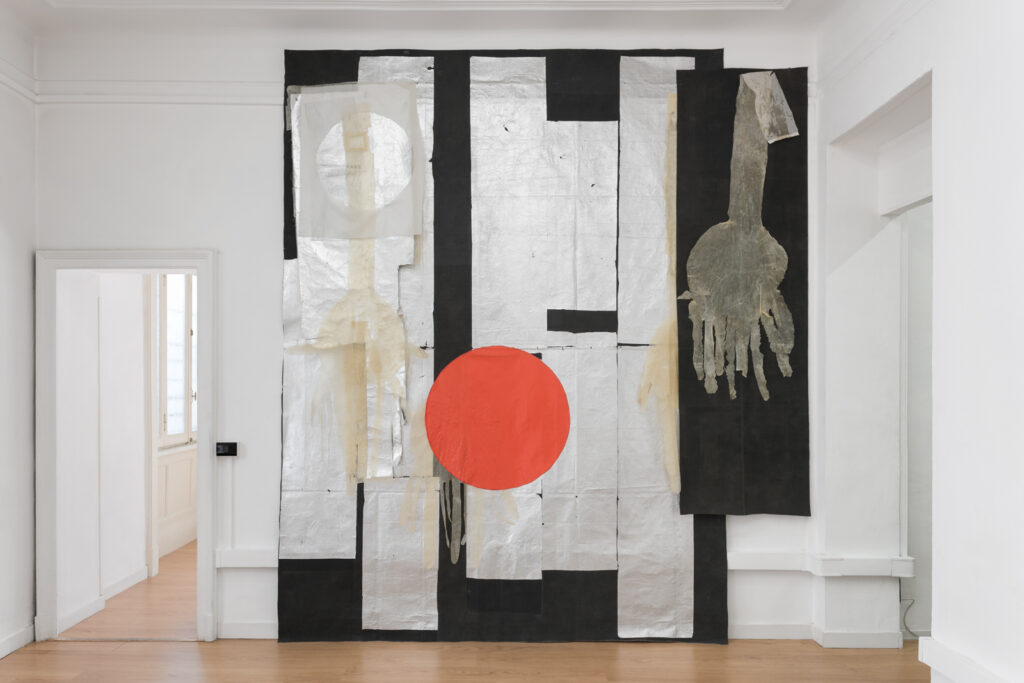
Vijay Masharani (b. 1995 Bay Area, CA) is an artist and writer living and working in Queens. He received his BFA in Fine Art from the Mary- land Institute College of Art in 2017. Recent shows: #38: Gas, Honey (with Raza Kazmi). Museum Gallery. Brooklyn, It Might Be Warm But It’s Not Clean (with Trisha Cheeney) High-Tide. Philadelphia.

Tarwuk is an artist duo founded in 2014 who live and work between New York and Croatia.Recent solo exhibitions include: Tužni Rudar, 15 Orient, NY; 21070621-141332(2), The Museum of Fine Arts, Osijek, Croatia; help me, help you, Essex Flowers, NY.
Recent group exhibitions include: Metal Meadow at Camp Eternal Hell Chamber, Cobleskill, NY; Ankle Biter, GMK, Zagreb ; Ti živiš već hilja- du godina, team gallery, NY; Beside Myself, JTT, NY; Host, Showroom MAMA, Rotterdam; Tout est pret. Au premier signal que vous nous
enverrez de Tireste, tous se leveront en masse pour l’independance de la Hongrie. Xrzah, at The Ethnographical Museum of Istria, Pazin.

